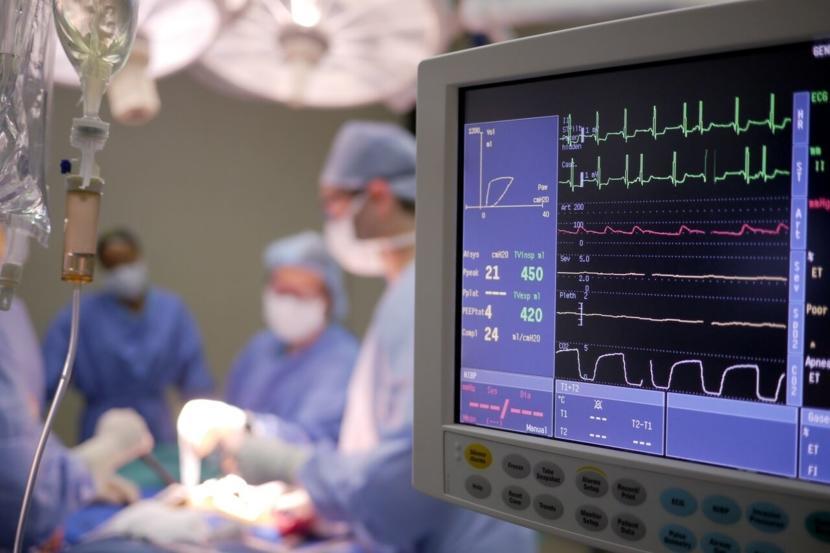Atrial Fibrillation: What is a Catheter Ablation?

Atrial fibrillation - also known as AF or a-fib - is a medical condition that affects the rhythm of the heart. Problems that affect the rhythm of the heart cause a condition known as arrhythmia. This condition often causes irregular blood flow. It is quite common, with more than 200,000 cases in the United States each year. Sometimes, the condition has no symptoms, but it is treatable by a medical professional. It requires an official diagnosis before treatment. Treatments include drugs, cardioversion, and minimally invasive surgery. It mostly occurs in those over the age of 40. Most episodes of a-fib are not life threatening. The biggest danger of a-fib is the risk of having a stroke. It is a chronic disease, potentially lasting years or an entire lifetime. Lab tests and imaging are usually needed in order to diagnose someone with atrial fibrillation.
The atria and the ventricles (Upper and Lower chambers) work in a uniform manner to pump blood to the whole body. During an a-fib infection the atria is affected - it shakes or vibrates (contrary to contraction), thus disrupting the present sync with the lower chambers of the heart. It may be caused by a previous heart surgery, hypertension, cardiomyopathy, defective heart valves, congenital heart disease or even lung disorders like asthma and COPD.
The symptoms of this anomaly include:
- Fainting
- Feeling lightheaded
- A throbbing sensation in the chest
- Shortness of breath
- Fatigue
In some cases there may be no symptoms at all. People with chronic diabetes mellitus are at a higher risk of developing this disorder.
The primary diagnosis of this disorder is done by an ECG (or EKG), which the doctor examines, along with the pulse of the patient. An a-fib is not a medical emergency, but it can develop into one at any time. Due to an a-fib, the blood might pool in the heart and result in a clot which can cause a stroke if it reaches the brain.
If a patient is unstable, then the doctors may use electro or chemical cardioversion (using electric shocks or a drugs) to convert the irregular rhythm into a normal one. There are different medical procedures for treating different types of arrhythmia and catheter ablation is one of them. Catheter ablation can also be simply referred to as ablation or radiofrequency ablation.
How Is the Catheter Ablation Procedure Performed?
During this medical procedure, a catheter, which is a thin flexible tube, is inserted into the heart. This tube passes radiofrequency (RF) energy to the small parts of the heart muscles that have been causing an abnormal rhythm of the heart. This new irregular rhythm interferes with the abnormal rhythm caused by a-fib. It therefore disconnects and restores a normal rhythm to the heartbeat. The type of catheter ablation performed depends on the type of cardiac arrhythmia one is suffering from. In rare cases, the doctors may perform an ablation during an open heart surgery which does not require a catheter. Doctors such as specialized cardiologists, interventional radiologists or surgical endoscopists commonly perform this procedure.
The procedure can also be used to destroy the affected tissues of the heart, thus restoring a regular rhythm. The procedure is usually painless and takes around 2 to 4 hours based on the size of the affected area. This procedure can also involve freezing the affected area (Cryoablation) to alleviate the symptoms.
How Successful Is the Treatment?
The success of the treatment also differs across individuals. In most cases, the treatment has proven successful in most individuals. However, you should discuss it with your doctor to estimate how successful it will be, based on factors such as your age, health condition and medical history.
The use of radiofrequency in catheter ablation has two distinct advantages over other methods:
- It prevents added damage by specifically destroying the faulty tissue without harming the surroundings.
- Due to its indirect stimulation of the heart muscles and nerves, there is often no further need of administering an anesthetic into the patient.
When Will My Doctor Recommend Catheter Ablation?
Ablation as a treatment for a-fib is normally suggested under the following circumstances:
- If the drugs you are taking are not rectifying the problem (chronic cases)
- The type of cardiac arrhythmia you have can best be treated using this specific medical procedure.
- When the patient cannot tolerate the drugs prescribed to treat his/her condition.
- The abnormal electrical activity in your heart poses high risks of causing ventricular fibrillation or sudden cardiac arrest. You will therefore require immediate treatment to avoid further damage. (Preventing V-fib is the highest priority)
Are There Risks Involved with the Treatment?
This procedure comes with its own risks such as:
- Infection
- Bleeding
- Pain
All of these risks will occur at the site of the tube insertion. Your doctor should inform you of the risks involved with the procedure so that you can choose whether to undergo the procedure yourself. Although rare, certain complications can arise, such as:
- Stroke
- Blood vessel leakage
- Cardiac tamponade (fluid buildup)
- Nerve damage
- Death
At times, ablation also fails to correct the problem. When this happens, it may be necessary to undergo another procedure, or you may have to use a different approach to treat atrial fibrillation. This may involve medication or other medical procedures. Sometimes, even surgery is needed.
After the Procedure
Once the ablation procedure is completed, you will be taken to the recovery room where you may spend up to a few days recovering. However, some recover in merely a few hours. Doctors will check on you at intervals to ensure that no complications arise. If all is well, then you may be discharged, but you will still need to have regular checkups. Usually, the discharge is dependent on the duration of the surgery, severe or mild symptoms, and if there were any anesthetic used, as it takes some time to ward off the effects from it.
The Bottom Line
Before jumping into any decisions for this procedure it is advisable to consult a number of legitimate medical opinions to ensure a successful result. Inform the doctor of your complete and accurate medical history, as it is very important to the doctor’s diagnosis and analysis of any underlying symptoms.
Catheter ablation is a very helpful medical procedure that can save your life. After treatment, you should monitor your healing progress carefully. In case of bleeding, swelling, or pain in your chest, visit a hospital immediately. Avoid any activities that may be strenuous and stressful. After such a procedure, the patient should take some time off day-to-day chores and rest. Maintaining a healthy and balanced diet along with periodical visits to the doctor is of utmost importance. A-fib can be efficiently conquered with the right decisions and timely choices.















